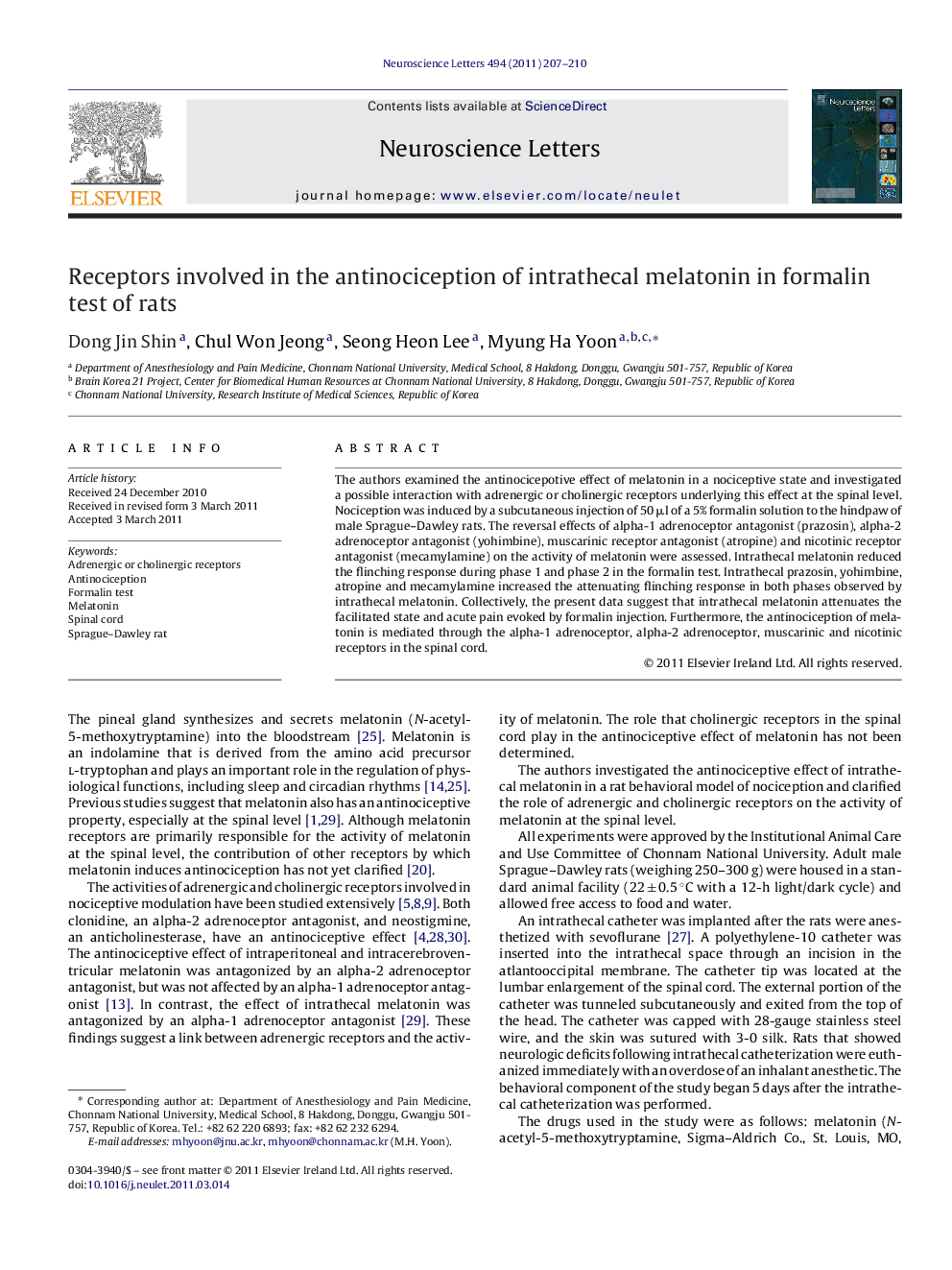| کد مقاله | کد نشریه | سال انتشار | مقاله انگلیسی | نسخه تمام متن |
|---|---|---|---|---|
| 4345361 | 1296725 | 2011 | 4 صفحه PDF | دانلود رایگان |

The authors examined the antinocicepotive effect of melatonin in a nociceptive state and investigated a possible interaction with adrenergic or cholinergic receptors underlying this effect at the spinal level. Nociception was induced by a subcutaneous injection of 50 μl of a 5% formalin solution to the hindpaw of male Sprague–Dawley rats. The reversal effects of alpha-1 adrenoceptor antagonist (prazosin), alpha-2 adrenoceptor antagonist (yohimbine), muscarinic receptor antagonist (atropine) and nicotinic receptor antagonist (mecamylamine) on the activity of melatonin were assessed. Intrathecal melatonin reduced the flinching response during phase 1 and phase 2 in the formalin test. Intrathecal prazosin, yohimbine, atropine and mecamylamine increased the attenuating flinching response in both phases observed by intrathecal melatonin. Collectively, the present data suggest that intrathecal melatonin attenuates the facilitated state and acute pain evoked by formalin injection. Furthermore, the antinociception of melatonin is mediated through the alpha-1 adrenoceptor, alpha-2 adrenoceptor, muscarinic and nicotinic receptors in the spinal cord.
► Intrathecal melatonin produced antinociceptive effect in the formalin test.
► Spinal alpha-1 and alpha-2 adrenoceptors are involved in the activity of melatonin.
► Spinal muscarinic and nicotinic receptors are involved in the activity of melatonin.
Journal: Neuroscience Letters - Volume 494, Issue 3, 2 May 2011, Pages 207–210